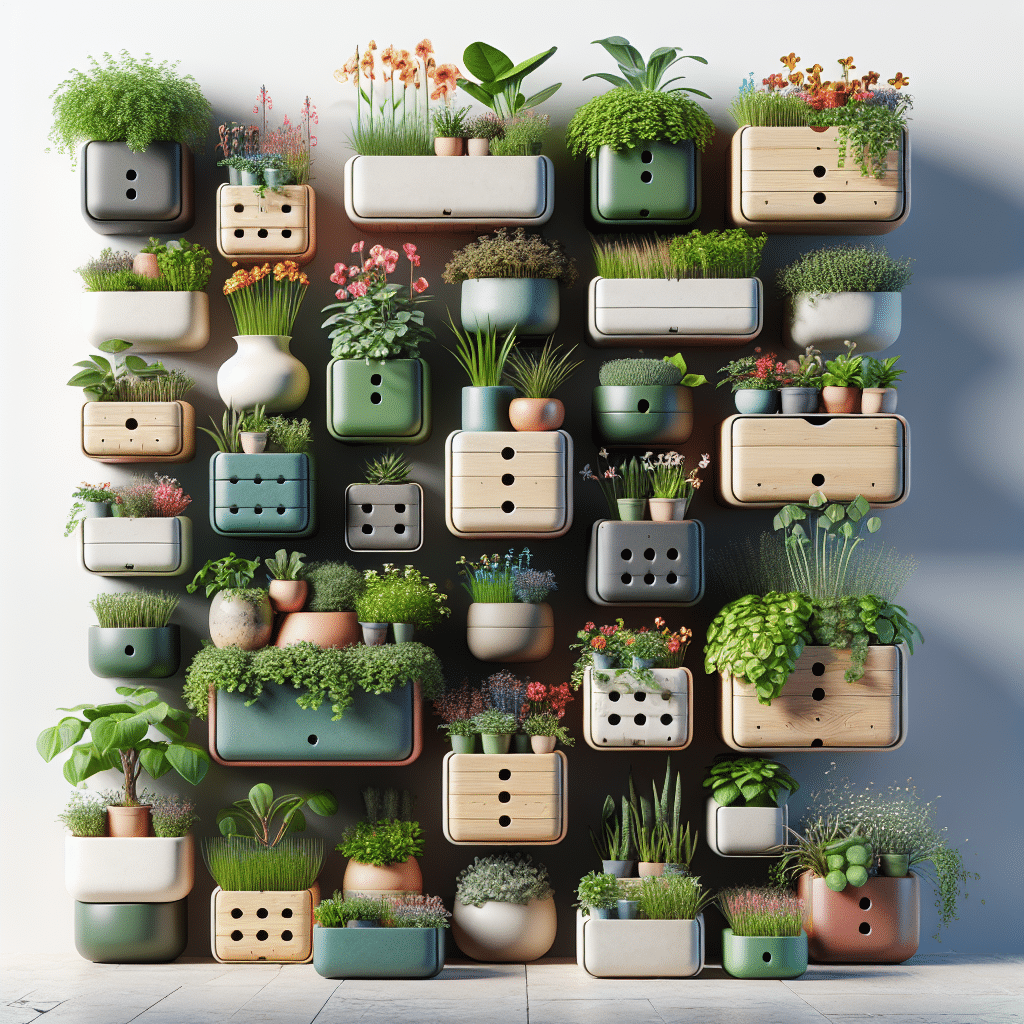Compact Planters for Small Spaces: Maximizing Your Green Thumb in Limited Areas
Understanding Compact Planters
Compact planters are specially designed containers that allow individuals to cultivate plants in confined spaces. Ideal for urban dwellers, apartments, and small gardens, these planters optimize space effectively. Available in various styles, sizes, and materials, they cater to diverse aesthetic preferences and functional needs. The rise in urban gardening demands these innovative solutions to enhance greenery in limited environments.
Benefits of Using Compact Planters
-
Space Efficiency: Compact planters are designed to maximize planting area without occupying excessive space. Vertical planters, wall-mounted boxes, and tiered gardens are excellent solutions for small balconies or patios.
-
Versatility: Available in materials such as plastic, wood, and metal, compact planters can suit any decor style. They can also accommodate a range of plants, from herbs and flowers to vegetables.
-
Improved Air Circulation: Many compact designs promote better airflow around plant roots, leading to enhanced growth and reduced risk of diseases.
-
Ease of Maintenance: Smaller gardening containers are easier to maintain, as they require less soil and water. This makes it feasible for busy individuals to manage their gardening tasks efficiently.
-
Accessibility: Compact planters can be placed at various heights, making gardening accessible for everyone. Excellent options include raised planters and tabletop containers.
-
Decorative Appeal: Compact planters often double as decor. Incorporating greenery into your space via stylish planters adds charm and beauty.
Types of Compact Planters
-
Vertical Planters: Utilize vertical space effectively by allowing plants to grow upward. Perfect for herbs, flowers, and even strawberries, these planters save significant ground space while adding a striking visual element.
- Example: A vertical pallet planter can be crafted from recycled wood, providing a rustic aesthetic while maximizing planting opportunities.
-
Wall-Mounted Planters: These planters attach directly to walls, allowing homeowners to create a living wall garden. They can be used both indoors and outdoors, adding greenery without consuming floor space.
- Example: Utilizing a series of small hanging pots or a modular wall planter system can enhance urban balconies or indoor kitchens.
-
Tiered Planters: Multi-level planters allow for an assortment of plants while only occupying a small footprint. These are ideal for growing a variety of herbs and small flowers.
- Example: A tiered wooden planter can create a cascading effect, making it visually appealing while providing ample planting space.
-
Self-Watering Planters: These planters come with built-in reservoirs to provide consistent moisture to plants, minimizing the need for constant watering—ideal for busy gardeners.
- Example: Urban dwellers can benefit from self-watering pots to maintain healthy plants without daily attention.
-
Portable Planters: Containers on wheels allow for mobility, letting you easily move plants to capture sunlight or protect them from elements.
- Example: A rolling herb cart can provide easy access to fresh herbs while enhancing aesthetic appeal in kitchens or patios.
Choosing the Right Material
The choice of material for your compact planter significantly affects the health of your plants and the overall aesthetic. Here are some popular materials:
-
Plastic: Lightweight, affordable, and available in a variety of colors, plastic planters are easy to handle. Look for high-quality UV-resistant options to prevent fading.
-
Wood: Offers a natural look and excellent insulation properties for roots. Cedar and redwood are popular due to their resistance to rot. Ensure the wood is untreated to avoid chemical leaching.
-
Metal: Adds a modern touch, particularly when galvanized steel is used. Metal planters require good drainage and can heat up quickly, so choose wisely based on your plant needs.
-
Ceramic and Terracotta: These materials are aesthetically pleasing and promote good drainage. However, they can be heavy and more susceptible to breakage, making them less practical for mobile use.
Plant Selection for Compact Planters
Choosing the right plants is crucial for the success of compact gardening. Opt for varieties that thrive in confined spaces:
-
Herbs: Plants like basil, mint, and chives grow well in smaller containers and offer kitchen convenience.
-
Compact Vegetables: Lettuce, radishes, and dwarf cherry tomato varieties can flourish in limited spaces.
-
Succulents: Drought-resistant plants such as succulents require minimal maintenance and add texture to compact planters.
-
Small Flowering Plants: Petunias, marigolds, and pansies are excellent choices for creating vibrant compact flower displays.
-
Combination Planting: Pairing herbs with ornamental flowers creates a visually appealing and functional planter.
Maintenance Tips
To ensure healthy plants in compact planters, employ these maintenance strategies:
-
Regular Watering: Depending on the plant type and weather, ensure consistent watering. Self-watering systems can aid in managing moisture levels.
-
Fertilization: Use organic fertilizers suited for container gardening to ensure plants receive necessary nutrients.
-
Pruning: Regularly trim your plants to promote growth and prevent overcrowding. This is especially important for herbs that can become woody if not maintained.
-
Pest Management: Keep an eye out for pests. Early identification and natural remedies can keep your mini-garden healthy.
-
Seasonal Changes: Adapt your plant choices based on seasons, ensuring optimal conditions for each species.
Conclusion of Features and Advantages
Compact planters present unique solutions for small-space gardening, making it achievable for anyone with limited outdoor space to enjoy the benefits of gardening. With numerous styles to choose from, they can blend seamlessly into any area, offering a beautiful way to connect with nature. Understanding the various types and materials ensures that you find the best fit for your specific needs, while smart plant choices and maintenance techniques promote a thriving mini-ecosystem. Embrace your garden potential without the limitations of space—compact planters are the key to flourishing greenery in urban settings.
